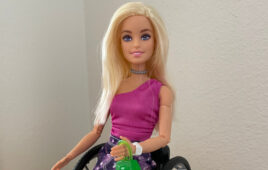
BABY AND FATHER’S HANDS: ISTOCKPHOTO.COM/MAGICAL_LIGHT
Much of the work of the seating and wheeled mobility professional focuses on independence: moving via a manual or power wheelchair.
But when independent mobility is not possible, what objectives should the seating and wheeled mobility team set for themselves and their client?
One example of that scenario is the child who has cerebral palsy and has been classified at GMFCS Level V.
Understanding GMFCS Scores
The Gross Motor Function Classification System (GMFCS) describes a child’s motor function while also indicating the level or complexity of mobility-related assistive technology a child would be expected to require, according to the Cerebral Palsy Alliance Research Foundation (cparf.org).
A GMFCS score (see Featuring Health Canada, AB Science, and the Rehabilitation Engineering and Assistive Technology Society of North America.VGM Updates Member Success Team
The member services organization announced a promotion and a new hire.CMS Announces Medicaid Services Final Rule on Access
The final rule seeks to make Medicaid FFS rates more transparent for stakeholders.
Commentary: Barbie Reigns, Seat Elevation Coverage Intrigues in Q1
Reviewing Mobility Management’s most-read stories this quarter.
